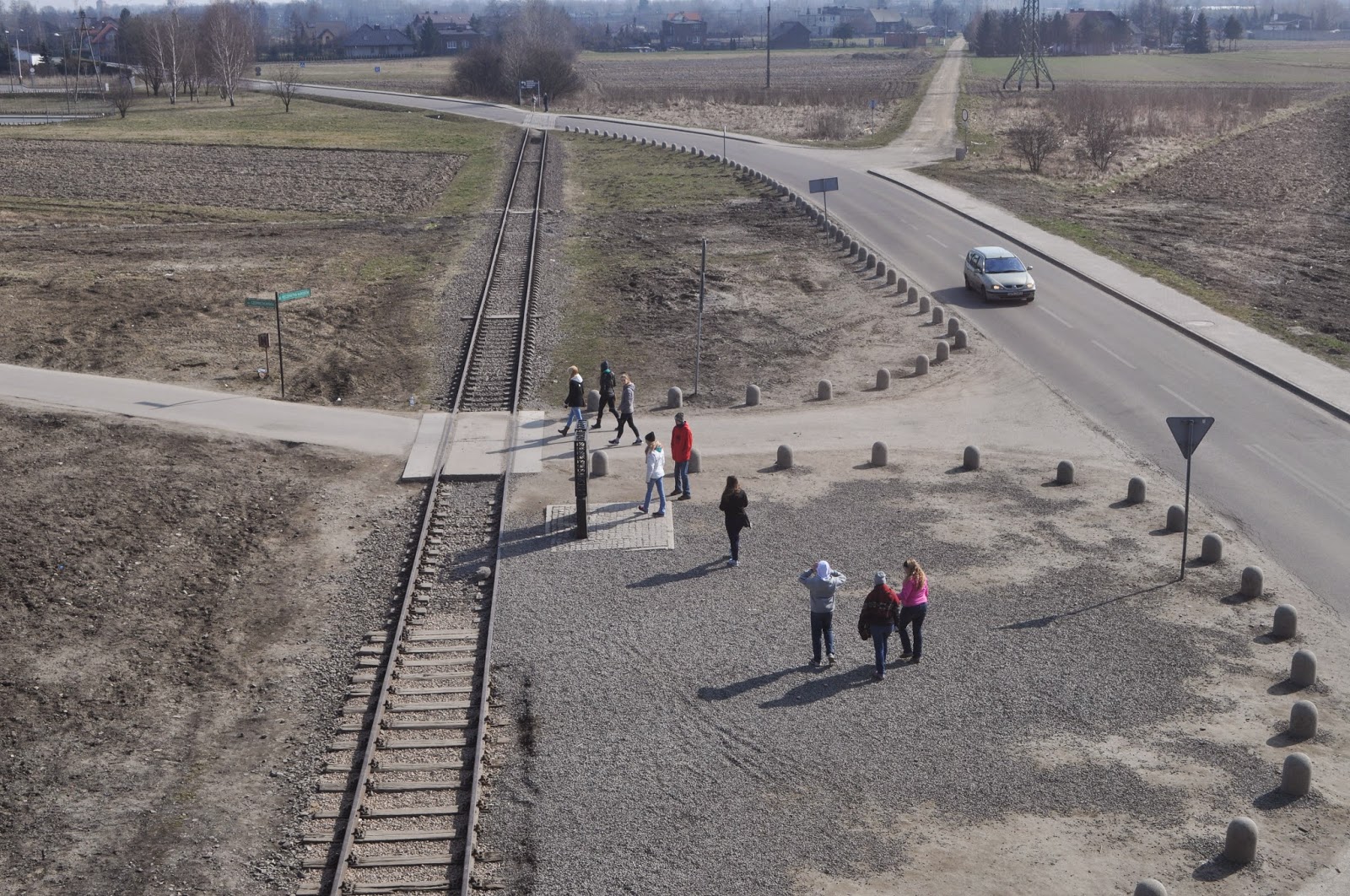So Saturday began early with a 5:30 wake up call. We boarded our bus and headed to the town of Oswiecim and its camp, Auschwitz.
Outside the gates
We began in Auschwitz I, the first camp and followed this up with a visit to Auschwitz II, also known as Birkenau. Somehow it seemed wrong to take photos of the students during this visit, so we will simply share what we saw and learned and leave the photos of the location to speak for themselves. Students were issued headphones connected to our guide's microphone so she could speak softly and we could move a bit apart to take things in with a bit of physical and emotional space.
At Auschwitz, we entered under the "Arbeit macht frei" sign where prisoners were stripped of their civilian clothes and names. We saw the brick barracks, which were originally Polish military barracks. Inside several of them were exhibitions describing the origins of the camp for Soviet POWs and Polish political prisoners. The exhibits got grimmer as we saw cans of Zyklon B gas, shoes worn by the victims at their arrival, carefully labeled suitcases the owners had expected to reclaim, prosthetic limbs, shaving kits, and numerous photographs and maps. However, it was the human hair that was particularly difficult to see. Photos were not permitted here, nor could I have managed to take any.
Work does not make free. It bought people a reprieve, typically 2-4 months
The fences were electrified (fatal shock), and the zone just beyond was also fatal as guards in the tower like the one pictured would shoot. The building with many chimneys is the camp kitchen.
The rows of barracks with the tower and fence beyond
Human ash
A model of the gas chambers and crematoria at Birkenau. This side shows the people entering below ground into the undressing room
This model shows the gas chamber below ground and the crematoria above ground, where bodies were checked for valuables such as gold fillings, hair was shorn, and bodies burned.
Cans of Zyklon B. It took 6-7 pounds per chamber use (2000 persons), and 20 tons were used at the camps.
Prisoner clothes. More striking were the children's clothes and shoes.
Photos of prisoners (including children), including names, gave us a bigger story of the people who wore these clothes. Each of the almost 1.5 million who died at Auschwitz was a human being with a story, a past, a family, and hopes for the future.
We headed on to the execution wall, past the barrack which housed medical experimentation victims (particularly twins and victims of sterilization experiments) and into the torture barrack, where we saw standing cells, suffocation cells, and starvation cells as well as the site where the first experiments with the gas were carried out. We also learned about heroes such as Maximillian Kolbe, a Polish priest who took the place of a prisoner condemned to execution. Our visit included walking past the roll call grounds, a look inside the small gas chamber and crematorium at Auschwitz I (this camp was not actually an execution camp--that was Birkenau).
Execution courtyard
Execution wall
Gallows. Behind is a photo of the hanging, complete with faces and names.
The outside world included administrative buildings
This visit was grim, but our Polish guide was incredibly sensitive. I have never heard high school students so quiet for so long; they really took it in, but they also handled it well. We were particularly struck by how close the house of the commandant (Höss) was to the camp and wondered how his wife could love her life there so much.
The house is the one in which Höss lived with his wife and children. We are still inside the camp here.
Höss was hanged here after being convicted of war crimes in 1947. This photo and that of the house above were taken just steps apart.
Approaching the Birkenau gate
The "Gate of Death"
Brick barracks (a bit difficult to see in this photo, but you can get a sense of the size)
Restored wooden barracks and the chimneys beyond. They just go on and on.
One row of restored wooden barracks
This was the outhouse and washing barrack
Imagine bunks here. Notice the metal rings. The building was originally built for horses. The horses had a much better life than the human beings who lived here.
The sea of chimneys. The camp stretched to the treeline.
And the short side in the other direction.
Students cross the tracks one last time, walking quietly (oh, so quietly) back to the bus. We were so grateful for the nice weather, which allowed us to use the fresh air to sit outside and process.
I will blog about Prague either tonight or tomorrow as the students fly home. I will add a final post later this week that will consist primarily of photos as students have requested this. I promise the next post will be a MUCH happier one, as it seems Prague was the favorite city!





























No comments:
Post a Comment